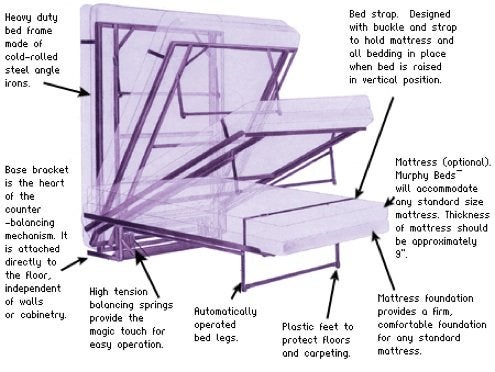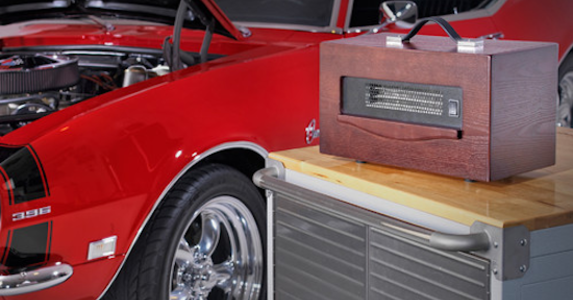Make Any Room a Bedroom with a Murphy Bed

Photo: murphybeds.com
There’s a room off our kitchen dedicated as a playroom for our daughters (ages 2 and 4). Originally, the house plan designated this space to be an office or bedroom. Since it’s on the first floor, I’d love to utilize it as a spare bedroom for my folks when they visit. Rather than moving my kids (and their stuff) to another level of the house, which would be less convenient and surely imprudent (note ages!), I’m considering installing the space-saving standard of my NYC roots—a Murphy Bed.
Slideshow:Murphy Beds: 9 Hide-Away Sleepers
Murphy beds have long been a solution for apartments and small spaces. But they also work beautifully in larger homes to make a room or space multi-functional. The Murphy Bed was invented by William L. Murphy as a way to hide the bed in his one-room apartment, so that he could have enough space to entertain. He created the Murphy Wall Bed Company in 1900 after applying for his first patent, and the rest is history.

Photo: morespaceplace.com
An incredible array of options and styles exists in modern Murphy Beds. If you’re shopping for one, you should consider several things.
Mechanism Options:
–Spring Mechanismsare used in the traditional Murphy Bed system and usually consist of a heavy-duty compressed steel spring housed within the bed frame. They are counter-balanced, which makes lifting and lowering the bed easy. But they do need adjustment after years of use, since the springs can fatigue and stretch over time.
–Piston Mechanismsutilize gas or air pressure to support the raising and lowering of the bed frame. Unlike a spring mechanism, a piston mechanism can lock when the bed is not in use—a valuable safety feature. Piston mechanisms cannot be adjusted once installed but compared to spring mechanisms, they experience much less fatigue and sagging.

Diagram: Murphy Bed Sleep Shop
Mounting Options:
–Floor Mountingis required by many systems with spring mechanisms. Mounting a Murphy Bed into the floor makes it extremely stable but may permanently damage the floor. A floor-mounted Murphy Bed is also very difficult, if not impossible, to move once installed.
–Wall Mountingis most commonly used with piston mechanisms. Generally, a wall-mounted Murphy Bed is attached to studs and can be moved with minimal damage.
Vertical vs. Horizontal:
最traditionall垂直壁床y recognized as a Murphy Bed. Though it requires the ceiling be high enough to accommodate an upright bed, this orientation blends well into adjacent cabinetry, like bookcases. A horizontal wall bed is well-suited for rooms with lower ceilings (like an attic space) or rooms with a smaller footprint (into which the bed can lower).

Horizontal-style Murphy Bed. Photo: murphybedlifestyles.com
Construction materials, styles, and finishes for Murphy Bed systems are as diverse as for any other cabinetry. From traditional to modern, from solid wood to melamine, there is likely a Murphy Bed to satisfy any design taste. It can become a lasting fixture in your home, hosting a lifetime of visiting family and friends, the entertainment of whom William L. Murphy would surely approve.
In the market for a Murphy Bed? Don’t miss our product showcaseMurphy Beds: 9 Hide-Away Sleepers
For more space-saving solutions, consider:
5 Small Bathroom Space-Busters
Kitchen Layouts: 4 “Space-Smart” Plans
30 Fresh Space-Saving Bunk Bed Ideas






